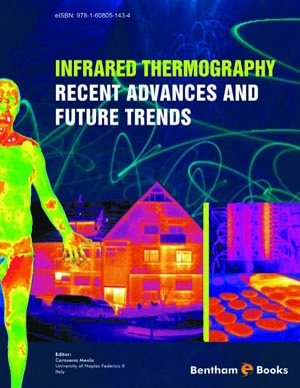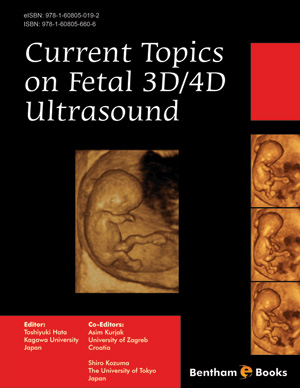PART 1: TRANSFORM TOUR
Page: 3-3 (1)
Author: Leonid Yaroslavsky
DOI: 10.2174/978160805230111101010003
PDF Price: $15
Abstract
Full text available
Signal Linear Transforms: Mathematical Preliminaries
Page: 4-6 (3)
Author: Leonid Yaroslavsky
DOI: 10.2174/978160805230111101010004
PDF Price: $15
Abstract
In this introductory chapter we outline basic notions and mathematical models related to signal linear transformations.
Discrete Fourier Transform and its Derivatives
Page: 7-31 (25)
Author: Leonid Yaroslavsky
DOI: 10.2174/978160805230111101010007
PDF Price: $15
Abstract
In this chapter, we provide basics of integral Fourier Transform and present discrete transforms originated from this very basic signal transform. We consider different versions of the Discrete Fourier Transform (DFT) that can be obtained in different conditions of signal sampling and introduce, as its important special case, Discrete Cosine Transform that proved to serve as an ideal substitution to DFT in all its applications.
Hadamard, Walsh, Wavelet and Other Transforms
Page: 32-48 (17)
Author: Leonid Yaroslavsky
DOI: 10.2174/978160805230111101010032
PDF Price: $15
Abstract
This chapter is devoted to discrete transforms other than DFT and DCT. We begin with binary Walsh- Hadamard and Haar Transforms, then proceed to signal sub-band decomposition wavelet and sliding window transforms and end up with Radon Transform.
Energy Compaction Capability of Transforms
Page: 49-56 (8)
Author: Leonid Yaroslavsky
DOI: 10.2174/978160805230111101010049
PDF Price: $15
Abstract
In this chapter we address energy compaction capability of transform, a feature that determines the capability of transforms to compactly approximate signals with a given mean square error
PART 2: APPLICATIONS AND ALGORITHMS
Page: 57-57 (1)
Author: Leonid Yaroslavsky
DOI: 10.2174/978160805230111101010057
PDF Price: $15
Abstract
Full text available
Signal Spectral Analysis
Page: 58-66 (9)
Author: Leonid Yaroslavsky
DOI: 10.2174/978160805230111101010058
PDF Price: $15
Abstract
In this chapter, we outline the use of Discrete Fourier and Discrete Cosine Transforms for signal Fourier spectral analysis. The emphasis is made on measuring signal spectra with sub-sample resolution and on the resolving power of the discrete spectrum analysis as its main metrological characteristics.
Signal Restoration by Means of Linear Filtering
Page: 67-80 (14)
Author: Leonid Yaroslavsky
DOI: 10.2174/978160805230111101010067
PDF Price: $15
Abstract
In many signal processing applications, the primary goal is restoration of signals distorted by signal sensor systems. Most frequently the distortions result in signal contamination by sensor’s noise and signal blurring due to limited resolving power of sensors. Thus, signal denoising and deblurring are required. In this chapter, we describe principles of signal restoration using transform domain linear filtering and a family of easy to use sliding window transforms domain signal, image and video restoration algorithms capable of local adaptivity.
Signal Resampling and Interpolation: Building Continuous Signal Models
Page: 81-93 (13)
Author: Leonid Yaroslavsky
DOI: 10.2174/978160805230111101010081
PDF Price: $15
Abstract
When working with sampled signals in computers, one frequently needs to refer back to their continuous originals. Typical applications that require reconstruction of continuous signal models are signal resampling for signal fractional shift, image geometrical transforms, signal restoration from sparse samples, to name a few. In this Chapter, we describe methods of discrete sinc-interpolation, the “gold standard” for interpolation of sampled data, and illustrate its advantages and some applications.
Numerical Differentiation and Integration
Page: 94-102 (9)
Author: Leonid Yaroslavsky
DOI: 10.2174/978160805230111101010094
PDF Price: $15
Abstract
Numerical differentiation and integration are very frequently required in processing experimental data. Typical examples, to name a few, are measuring velocities or acceleration from position or, respectively, velocity data, image reconstruction from projections by the method of “back projection”, profile reconstruction from slope data in optical metrology. In this chapter, we describe transform based numerical differentiation and integration algorithms and demonstrate their advantages over standard numerical differentiation and integration algorithm.
Efficient Algorithms
Page: 103-111 (9)
Author: Leonid Yaroslavsky
DOI: 10.2174/978160805230111101010103
PDF Price: $15
Abstract
Transform domain signal processing might be very time consuming unless efficient computational algorithms are used. In this chapter, we describe application of Fast Fourier and Fast Cosine Transform to computing signal convolution and Scaled and Rotated Discrete Fourier Transforms and, in addition, recursive algorithms for computing local signal DFT and DCT spectra in sliding window.
Abstract
Full text available
Introduction
This ebook covers fast transform algorithms, analyses, and applications in a single volume. It is the result of the collaboration by the author with others in the world wide university community and has been accumulated over the author’s working lifetime of about 40 years. It has now culminated in a nice mix of theoretical development and practical uses of various fast transforms. Thus readers will find practical approaches not covered elsewhere for the design and development of fast transform methods. Some of the most immediate applications, such as detection and analysis of periodicities in data, signal denoising and deblurring, signal resampling, precise differentiation and integration are covered and supported by concrete algorithms in this book. Other potential applications are supported by a tour of the theory and mathematical abstraction. The book is addressed to a broad circle of experimentalists, researchers and students that are not regularly educated in signal processing and work in various fields in experimental sciences ranging from physics a to metrology and to biomedical engineering.














